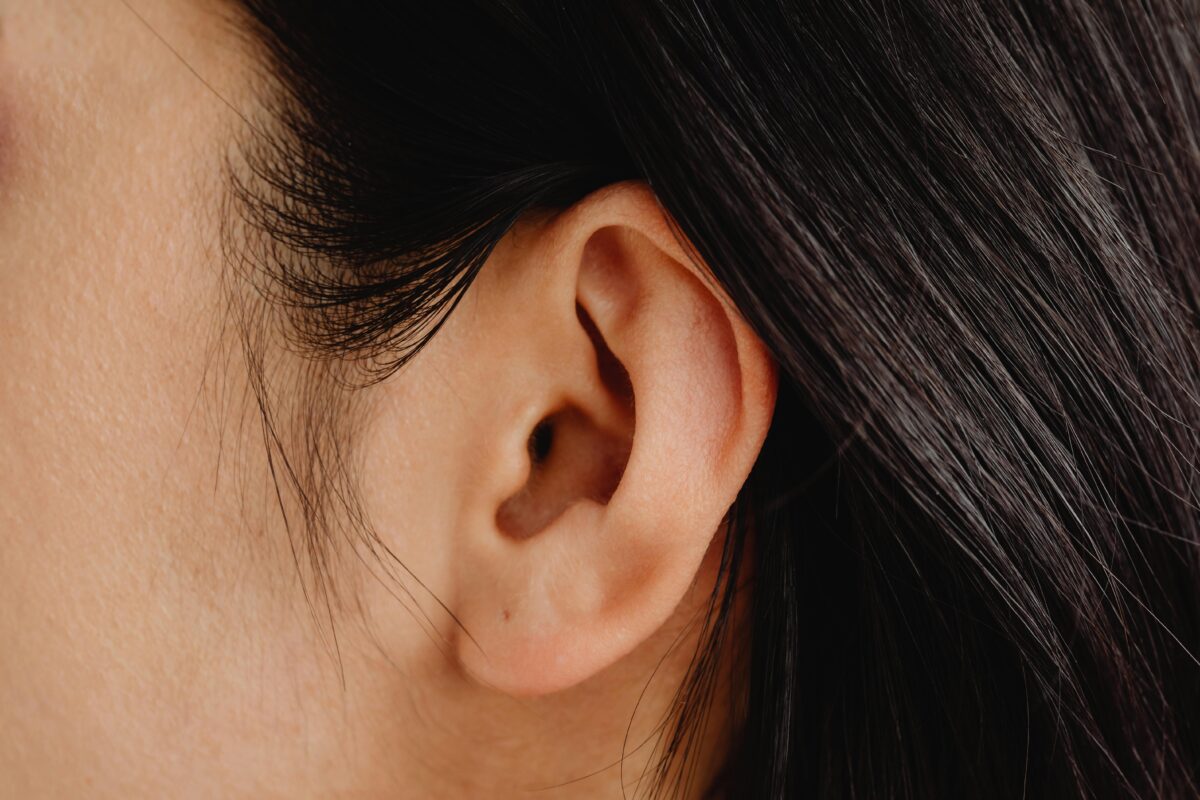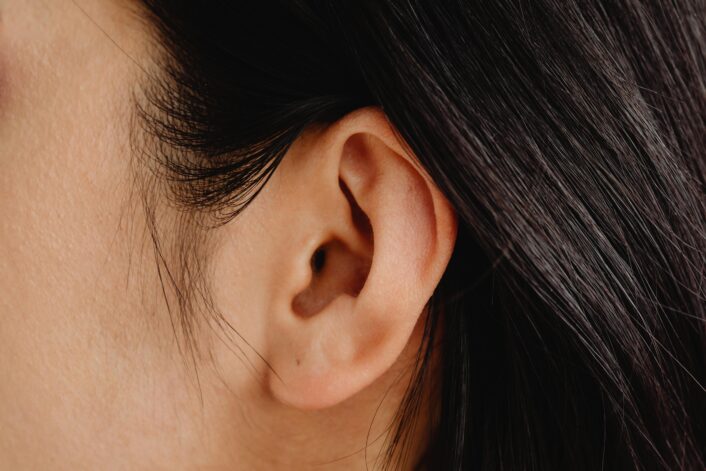Earwax Type and its Genetic Significance
harvey
on
April 2, 2024

Latest Posts
Table of Contents
Earwax Type and its Genetic Significance
Date of Content: March 12, 2024
Written by: Harvey Talento
Reviewed by: Maarit Tiirikainen, PhD
Earwax, also known as cerumen, plays a critical role in maintaining healthy ears. Often dismissed as an unpleasant necessity, earwax boasts fascinating variations with underlying genetic links. Understanding these offers a deeper appreciation for this essential component of a healthy auditory system.

Wet vs. Dry Earwax
There are two main types of earwax, each with distinct characteristics and prevalence among different ethnic groups.
- Wet earwax, which is sticky and yellowish-brown, is more common in people of European and African descent. It acts like an adhesive, trapping dust and dirt to protect the ear canal.
- On the other hand, dry earwax appears flaky and grayish-tan, and is more prevalent among those with East Asian ancestry. Unlike wet earwax, it’s less adhesive, making it easier for the ear’s self-cleaning mechanism to remove debris.
The Functions of Earwax
Earwax serves several crucial functions in maintaining the health of the ears:
- Trapping dust and debris: Acting as a sticky barrier, earwax effectively traps dust, dirt, and other small particles that could otherwise irritate or harm the delicate ear canal and eardrum.
- Preventing infections: With its innate antibacterial and antifungal properties, earwax acts as a natural defender against germs, helping to stave off infections within the ear canal.
- Lubrication: Earwax plays a role in keeping the ear canal adequately moist and lubricated, thereby preventing dryness and minimizing the risk of irritation.
- Protection from water: In addition to its adhesive properties, earwax also exhibits water-repelling characteristics. This helps to shield the ear canal from water intrusion, reducing the likelihood of conditions like swimmer’s ear.
Overall, earwax serves as an integral component of the body’s defense system for maintaining ear health. By keeping the ears clean, lubricated, and safeguarded against infection, earwax plays a vital role in ensuring optimal auditory well-being.
Maintaining Ear Health
Maintaining optimal ear health necessitates a delicate equilibrium in earwax production, regardless of its type. Whether wet or dry, an overabundance of earwax can result in impaction, leading to discomfort and potential hearing impairments.
In cases where ear-related issues arise, seeking guidance from a healthcare professional for appropriate ear cleaning is paramount. By prioritizing proactive ear care and promptly addressing any concerns, individuals can safeguard their hearing and overall well-being.
How Genetics May Influence Earwax Type
The genetic basis for the differences in earwax type can be attributed to variations in the ABCC11 gene, which plays a crucial role in determining the consistency and composition of earwax.
ABCC11 Gene
The type of earwax a person has, whether wet or dry, is determined by a specific gene called ABCC11. This gene has a small variation known as a single nucleotide polymorphism (SNP), that affects the earwax type, specifically at position 538 where a G can change to an A.
If a person has two A-alleles of this SNP (AA genotype), they will have dry earwax. On the other hand, if they have one or two G-alleles(GA or GG genotype), they will have wet earwax.
This SNP isn’t the only factor; there’s also a deletion variant of 27 base pairs in a specific part of the ABCC11 gene that can influence earwax type, particularly in some people of Asian descent.
Scientists have found that the type of earwax a person has is linked to how efficiently their cells expel a molecule called cyclic guanosine monophosphate (cGMP).
Cells with the A-allele of the SNP, which is linked to dry earwax, are less efficient at getting rid of cGMP than cells with the G-allele, which is linked to wet earwax.
Interestingly, the distribution of these earwax types follows a geographical pattern, with dry earwax more common in certain populations, like those in northeast Asia, particularly among Chinese and Koreans. This suggests that the dry earwax variant of the ABCC11 gene likely originated in northeast Asia and then spread to other parts of the world over time.
Non-Genetic Factors Influencing Earwax Type
While genetics primarily determines whether one has wet or dry earwax, there are additional factors that may contribute to earwax type, although research in these areas is still evolving:
Age
Earwax production tends to decrease naturally as individuals age. This decline could be attributed to hormonal changes or simply a slowdown in the activity of the ceruminous glands responsible for earwax secretion.
Diet
While no direct correlation has been established between specific foods and earwax type, some hypotheses suggest a potential indirect link. It’s theorized that diets rich in unhealthy fats might trigger inflammation, which could impact the consistency of earwax. However, further research is needed to validate this connection.
Ear Canal Health
Certain ear conditions such as eczema or chronic infections might potentially influence the composition of earwax. However, conclusive evidence is lacking, and more studies are necessary to confirm these associations.
Environmental Factors
There are speculations that environmental factors, such as climate, could play a role in earwax type. For instance, it’s suggested that dry earwax might be advantageous in colder regions, where it could prevent secretions from freezing. Nonetheless, these theories require thorough investigation before any definitive conclusions can be drawn.
It’s essential to recognize that while these factors may play a role, genetics overwhelmingly dictate earwax type. The influence of these additional factors on earwax composition is likely minimal compared to the dominant role of genetic predisposition. Further research is essential to unravel the complexities surrounding earwax production and its various determinants.
About the LifeDNA Wellness Report
Understanding even complex factors like those affecting Earwax Type becomes pivotal as we navigate the intricate pathways of our wellness. Imagine having personalized insights into your unique genetic traits related to your well-being. This is where the LifeDNA Wellness Report steps in. Going beyond generic advice, this tool provides tailored recommendations based on your genetic code, offering a holistic perspective on your well-being. By unlocking your genetic insights, you can take proactive steps towards a brighter, more informed lifestyle with the LifeDNA Wellness Report. Get it today!
Summary
- Earwax, also known as cerumen, is crucial for maintaining healthy ears and exhibits fascinating variations with genetic links. Understanding these variations provides deeper insights into the significance of this essential component of auditory wellness.
- There are two main types of earwax, wet and dry, each prevalent in different ethnic groups. Wet earwax, sticky and yellowish-brown, is common in individuals of European and African descent, while dry earwax, flaky and grayish-tan, is more prevalent among those with East Asian ancestry.
- Earwax serves multiple critical functions in ear health, including trapping dust and debris, preventing infections, lubricating the ear canal, and protecting from water intrusion. It acts as a natural defense system, ensuring optimal auditory well-being.
- Maintaining proper ear health requires a balance in earwax production. Excess earwax can lead to impaction and discomfort, necessitating professional ear cleaning when issues arise to prevent hearing impairments.
- The ABCC11 gene primarily determines earwax type, with variations leading to wet or dry earwax. The distribution of these variations follows a geographical pattern, suggesting a link between genetics and earwax type prevalence among different populations.
While genetics plays a dominant role, factors such as age, diet, ear canal health, and environmental factors may also influence earwax type, albeit to a lesser extent. Further research is needed to fully understand these influences on earwax composition.
References
- https://my.clevelandclinic.org/health/body/24624-earwax
- https://www.ncbi.nlm.nih.gov/sites/books/NBK2333/#:~:text=To%20isolate%20the%20specific%20genetic,5%2Dgene%20region%20of%20DNA.
- https://www.betterhealth.vic.gov.au/health/conditionsandtreatments/ear-wax
- https://pubmed.ncbi.nlm.nih.gov/18694532/
- https://www.ncbi.nlm.nih.gov/books/NBK536541/
- https://academic.oup.com/mbe/article/28/1/849/987325
- https://www.nature.com/articles/ng1733
Customer Reviews




*Understanding your genetics can offer valuable insights into your well-being, but it is not deterministic. Your traits can be influenced by the complex interplay involving nature, lifestyle, family history, and others.
Our reports and suggestions do not diagnose or treat any health conditions or provide any medical advice. Consult with a healthcare professional before making any major lifestyle changes or if you have any other concerns about your results.
- Category: Wellness



